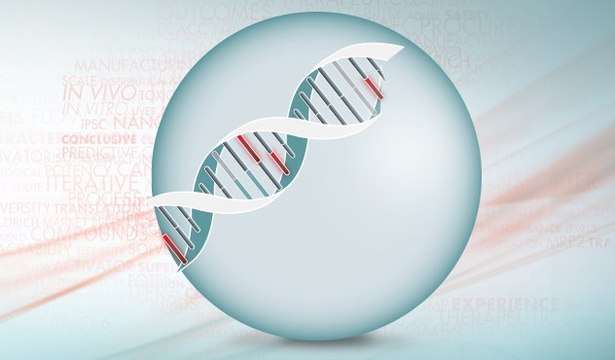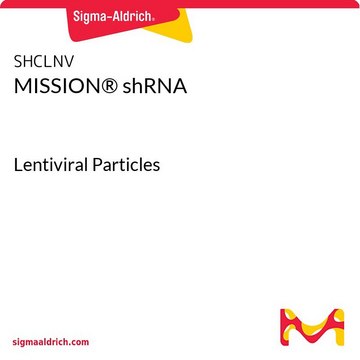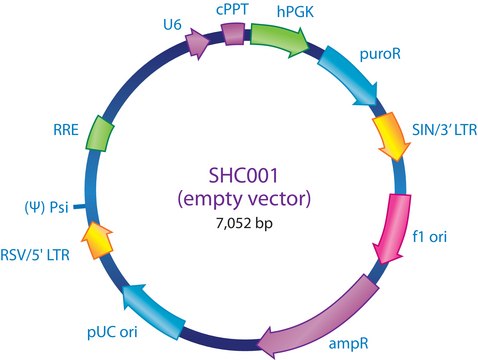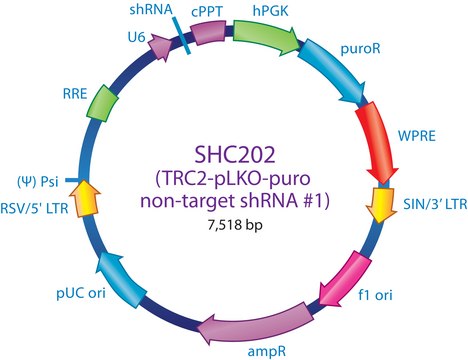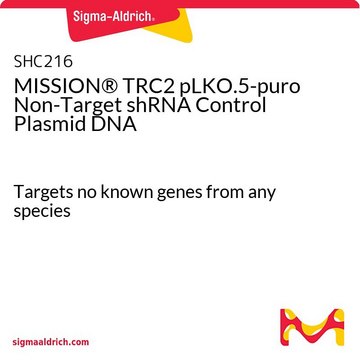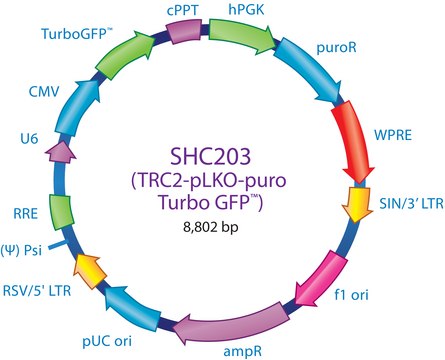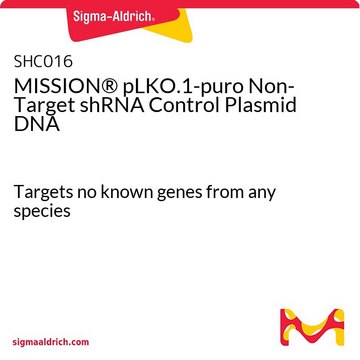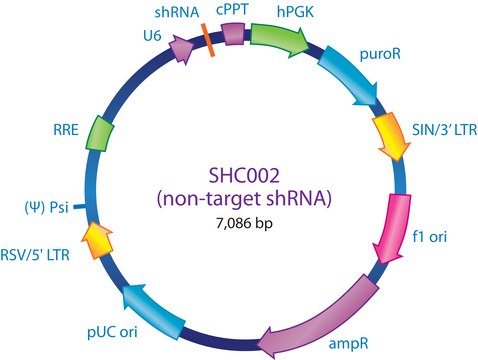SH0831
MISSION® shRNA Human Gene Family Set, Lentiviral Particles
Cytokines and Chemokines
Sign Into View Organizational & Contract Pricing
Select a Size
Change View
1 G
₹15,800.00
About This Item
UNSPSC Code:
41106609
NACRES:
NA.51
₹15,800.00
Please contact Customer Service for Availability
Request a Bulk OrderRequest more information
Recommended Products
Looking for similar products? Visit Product Comparison Guide
Related Categories
General description
Lentiviral particles (representational, plate titer) are provided in 96-well plates that are barcoded for simple identification. Aliquots of 4 x 50μl are provided to prevent the need for excessive freeze/thaw, and maximize functional viral particles. Each gene family set is representationally titered (10% of clones). Fully titered sets are also available, for more information inquire at RNAi@sial.com. A CD containing RefSeq, gene description, gene symbol, clone ID, hairpin sequence, locus link, and plate map positions are provided with the gene family set.
Other Notes
Each MISSION shRNA clone is constructed within the lentivirus plasmid vector, pLKO.1-Puro, followed by transformation into Escherichia coli. The pLKO.1-Puro vector contains bacterial (ampicillin) and mammalian (puromycin) antibiotic resistance genes for selection of inserts in either bacterial or mammalian cell lines. Each clone set consists of an average of 3-5 constructs that have been designed against each target gene using a proprietary algorithm. Therefore, a range of knockdown efficiency, with at least one construct from each gene set being >70%, can be expected when using these clones. This allows one to examine the effect of loss of gene function over a large series of gene knockdown efficiencies. Each shRNA construct has been cloned and sequence verified to ensure a match to the target gene.
For a detailed listing of other available gene family sets, visit the gene family set website.
Number of Genes: 106, Number of Clones: 528
The exact gene and clone count at time of purchase may vary slightly as the TRC library is continually updated.
Legal Information
Use of this product is subject to one or more license agreements. For details, please see http://sigmaaldrich.com/missionlicense .
MISSION is a registered trademark of Merck KGaA, Darmstadt, Germany
Storage Class Code
12 - Non Combustible Liquids
WGK
WGK 3
Flash Point(F)
Not applicable
Flash Point(C)
Not applicable
Personal Protective Equipment
dust mask type N95 (US), Eyeshields, Gloves
Choose from one of the most recent versions:
Certificates of Analysis (COA)
Lot/Batch Number
It looks like we've run into a problem, but you can still download Certificates of Analysis from our Documents section.
If you need assistance, please contact Customer Support
Already Own This Product?
Find documentation for the products that you have recently purchased in the Document Library.
The LIN28B/let-7 axis is a novel therapeutic pathway in multiple myeloma.
Manier S
Leukemia, 31(4), 853-860 (2017)
Small-molecule targeting of signal transducer and activator of transcription (STAT) 3 to treat non-small cell lung cancer.
Lewis KM
Lung Cancer, 90(2), 182-190 (2015)
STAT-3 contributes to pulmonary fibrosis through epithelial injury and fibroblast-myofibroblast differentiation.
Pedroza M
Faseb Journal, 30(1), 129-140 (2016)
Mesias Pedroza et al.
FASEB journal : official publication of the Federation of American Societies for Experimental Biology, 30(1), 129-140 (2015-09-02)
Lung fibrosis is the hallmark of the interstitial lung diseases. Alveolar epithelial cell (AEC) injury is a key step that contributes to a profibrotic microenvironment. Fibroblasts and myofibroblasts subsequently accumulate and deposit excessive extracellular matrix. In addition to TGF-β, the
Curtis A Clark et al.
Cancer research, 76(23), 6964-6974 (2016-09-28)
PD-L1 antibodies produce efficacious clinical responses in diverse human cancers, but the basis for their effects remains unclear, leaving a gap in the understanding of how to rationally leverage therapeutic activity. PD-L1 is widely expressed in tumor cells, but its
Our team of scientists has experience in all areas of research including Life Science, Material Science, Chemical Synthesis, Chromatography, Analytical and many others.
Contact Technical Service